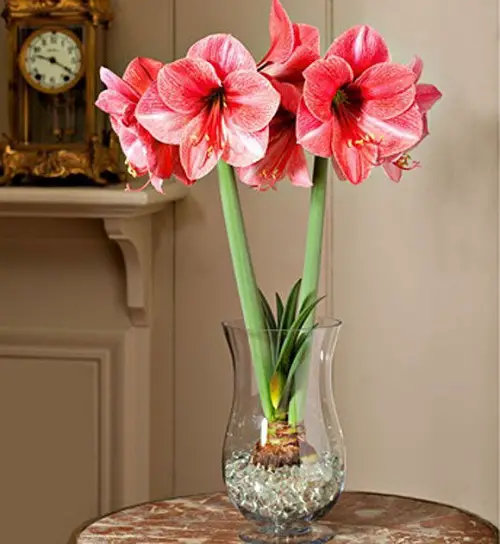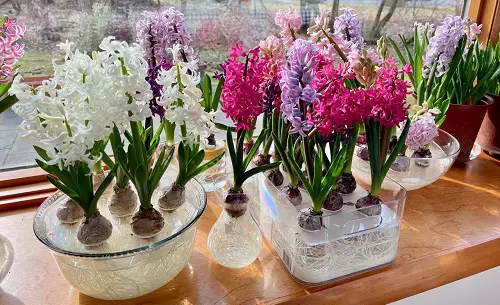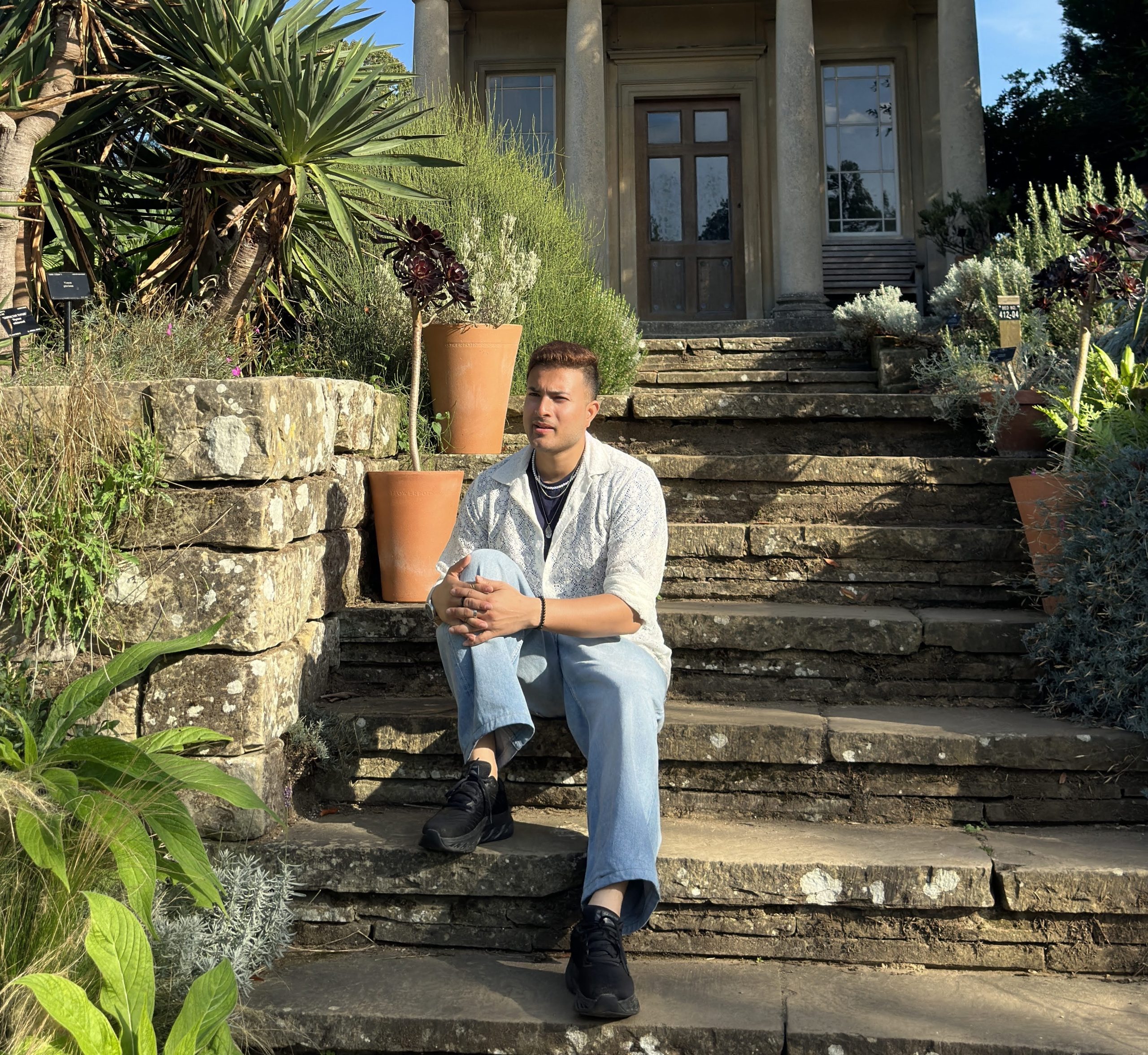Want to know How to Grow Any Bulb in a Glass of Water? It’s amazing and you don’t need a real garden to do that.
With a few simple steps you can Grow Any Bulb in Water and enjoy the beautiful blooms indoors, no matter how small your space is. Keep them on a windowsill or place them top of the shelf–up to you. You can even grow bulbs like paperwhite narcissus in clusters in water in the same container for a more attracting centerpiece.
Why You Should Definitely be Doing this
Because! Growing flowering bulbs in water is such a unique way to bring the magic of an outdoor flower garden indoors. Not only this there are more reasons listed below:
1. Year-Round Blooms: With bulbs grown in water, you’re no longer bound by the limitations of seasons. You can grow them year-round.
2. Space-Saving Activity: Urban dwellers and those with limited outdoor space can have their delightful garden activity this way. It’s a perfect DIY for apartments, small homes, or even offices.
3. Indoor Garden Artistry: You can transform windowsills, tables, and shelves into tiny living flower gardens this way.
4. Simple and Easy: The process of growing bulbs in water is remarkably straightforward. Even for beginners, it offers an easy entry into the world of gardening and plant care. You can even involve kids in that!
Supplies Needed
- Bulb: Choose a disease-free, healthy bulb.
- Glass Container: A tall glass, mason jar, or even a specialized bulb vase.
- Water: Distilled or tap water that has sat out for 24 hours to let chlorine evaporate.
- Stones or Pebbles: Optional for added stability and decoration.
- Support Stakes: Wooden or metal sticks for tall-growing bulbs.
How to Grow Any Bulb in a Glass of Water – Step-by-Step Instructions
Preparation
- Inspect the Bulb: Ensure the bulb is firm and free of mold, rot, or punctures.
- Prepare the Glass: Fill the bottom of the glass with stones or pebbles, if using, for added stability.
Positioning the Bulb
- Orientation: Place the bulb with the pointed side up and the flat, root side down.
- Water Level: Add water to the glass, ensuring it only touches the base of the bulb. The roots need to access water, but the bulb should not be submerged to prevent rot.
Most Colorful Plants to Grow in Water Indoors
Placement and Light
- Location: Place the glass in a well-lit area but of course, out of direct sunlight, which could heat the water and stress the bulbs.
- Temperature: Aim for a consistent room temperature between 60-80°F for optimal growth.
Maintenance
- Water Level: Keep an eye on the water level, ensuring it stays consistent.
- Water Quality: Replace the water every week to prevent bacterial growth.
- Support: As the bulb grows, it may require support to keep it upright.
Expert Tips
- Oxygenation: Some experts suggest adding a tiny drop of hydrogen peroxide to the water to oxygenate it and promote root health.
- Scaling Up: If growing multiple bulbs, ensure each has enough space for root development in a larger container.
- Root Rot: If you notice a foul odor or discoloration, it could be a sign of root rot. Replace the water and clean the glass immediately.
Best Bulbs to Grow in Water
While not all bulbs are suitable for this method, there are several types of plant and flower bulbs that thrive when grown in water. Below are some of the easiest bulbs to grow and care for in water-based setups:
1. Paperwhite Narcissus
- Ease of Care: Easy
- Water Needs: Shallow water, roots submerged
- Lighting: Bright, indirect light
- Flowering Time: 4-6 weeks after planting
2. Amaryllis
- Ease of Care: Moderate
- Water Needs: Half-submerge the bulb
- Lighting: Bright, indirect light
- Flowering Time: 6-8 weeks after planting
3. Hyacinth
- Ease of Care: Moderate
- Water Needs: Partial submersion, with the base touching water
- Lighting: Bright light, partial shade tolerated
- Flowering Time: 2-3 weeks after root development
4. Crocus
- Ease of Care: Easy
- Water Needs: Shallow water, base touching water
- Lighting: Moderate to bright light
- Flowering Time: 2-4 weeks after planting
Tulips
- Ease of Care: Moderate
- Water Needs: Base touching water, not submerged
- Lighting: Bright light
- Flowering Time: 3-4 weeks after chilling period
Here are the Most Beneficial Garden Insects You Should Avoid Killing
5. Freesia
- Ease of Care: Moderate
- Water Needs: Base touching the water
- Lighting: Bright light
- Flowering Time: 3-4 weeks after planting
Best Types of Vases, Bowls, and Glasses for Growing Bulbs in Water

Choosing the right container plays a crucial role in the successful water-based growth of plant and flower bulbs. The following are some of the best options, categorized by the types of containers:
Vases
1. Hyacinth Vases
- Best for: Hyacinths, smaller bulbs
- Features: Tapered neck to support the bulb above water
2. Clear Glass Cylindrical Vases
- Best for: Paperwhites, Amaryllis
- Features: Transparent for viewing root growth, wider opening for larger bulbs
3. Bud Vases
- Best for: Smaller bulbs
- Features: Small opening to hold the bulb or cutting securely
Glass Bowls
- Best for: Paperwhites, mixed bulbs
- Features: Shallow, wide opening to accommodate multiple bulbs
Best Plants to Grow in Glass Bowls of Water
Glasses
1. Mason Jars
- Best for: Smaller bulbs, cuttings of spider plants or peace lilies
- Features: Versatile, readily available, and rustic appearance
2. Wine Glasses
- Best for: Bulbs like Crocus
- Features: Elegance and style, with a narrow base to hold bulbs
Key Considerations
- Transparency: Clear containers and vases are often preferred to monitor water levels and root growth.
- Material: Glass is generally better than plastic for its style, sturdiness and transparency.
- Opening Size: Ensure the opening is wide enough for the bulb but not so wide that the bulb falls in.
- Depth: The container should be deep enough to hold sufficient water but not so deep that the bulb is submerged.
- Stability: Make sure the container has a stable base to prevent tipping over, especially for taller plants like Amaryllis.




